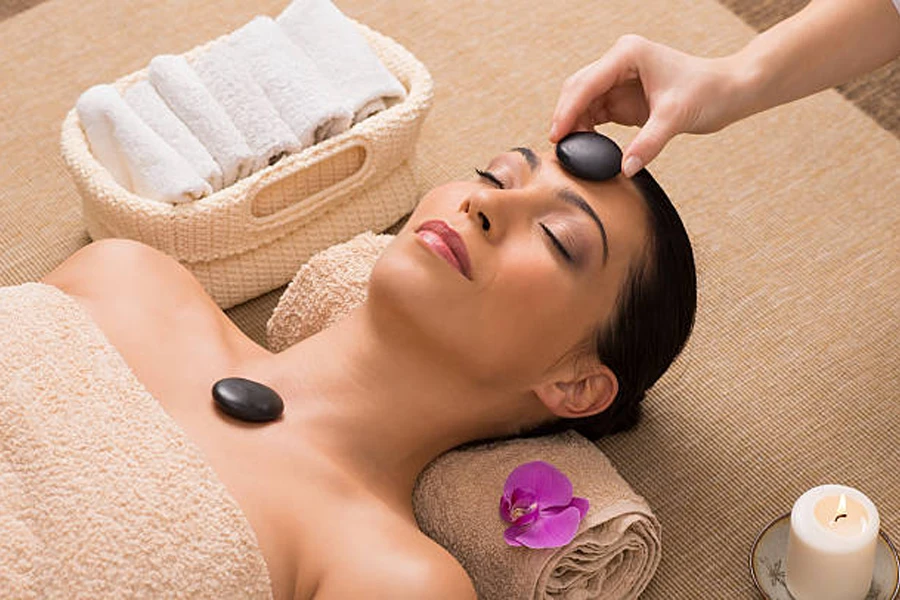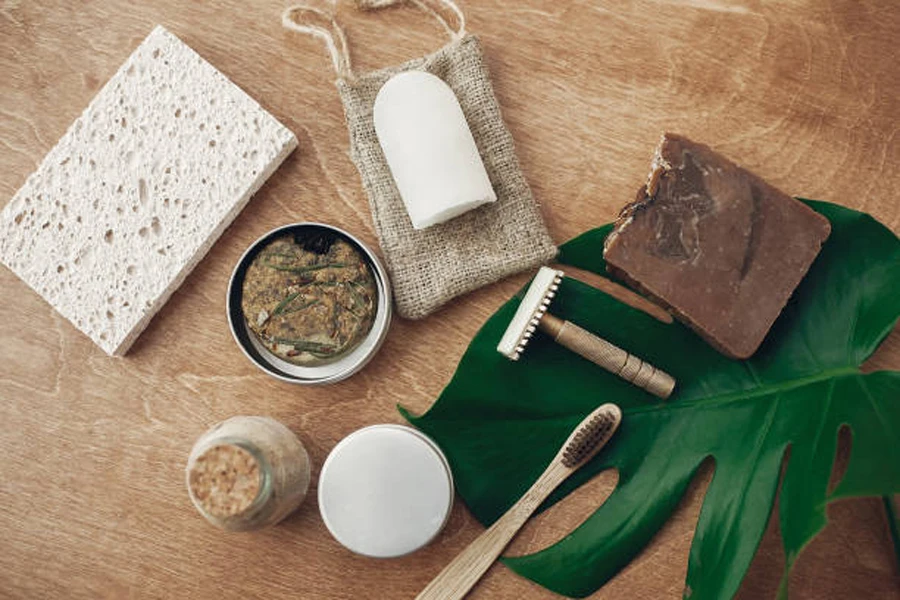As the beauty industry continues to evolve, a new wave of solid formulations is emerging, driven by a growing desire for more sustainable and affordable products. These innovative waterless concepts not only appeal to those concerned about their environmental footprint but also offer improved performance, better user experience, and elevated aesthetics. From high-performance skincare to functional packaging systems, the solid beauty category is becoming more sophisticated and mainstream. In this article, we will explore the key trends, strategies, and opportunities for brands looking to enter or expand their presence in this exciting and rapidly growing market.
Table of Contents
Next-gen solid skincare
Solid design 2.0
BYOW: bring your own water
The packaging conundrum
Action points

Next-gen solid skincare
Solid skincare formulations are undergoing a revolutionary transformation, with brands developing high-performance products that cater to the needs of even the most discerning customers. These next-generation formulas incorporate active ingredients and innovative delivery systems to provide efficacious results, rivaling their liquid counterparts.
One notable example is the emergence of solid retinoid formulations, which harness the anti-aging benefits of this powerful ingredient in a convenient and travel-friendly format. These products are designed to be warmed by the hands and applied to the skin like a serum, delivering targeted benefits without compromising on texture or absorption. Similarly, solid hyaluronic acid serums are gaining popularity, offering intense hydration in a mess-free, portable stick format.
As sun protection becomes an increasingly important part of daily skincare routines, brands are also exploring solid SPF formulations. Lightweight, non-greasy sunscreen sticks are proving to be a practical and easy-to-use option, particularly for those with active lifestyles or sensitive skin. These products often feature mineral-based formulas and are housed in eco-friendly packaging, appealing to the growing demand for sustainable sun care solutions.
To win over skeptical customers, brands should invest in consumer and clinical trials to demonstrate the efficacy of their solid skincare products. Offering miniature discovery sets can also be an effective way to encourage trial and conversion to full-size products, while addressing concerns about cost and commitment.

Solid design 2.0
As solid beauty products gain traction, brands are focusing on innovative design solutions to address common user experience challenges. By reimagining the traditional soap bar shape and embracing ergonomic principles, companies are creating products that are not only functional but also visually appealing and easy to use.
One approach is to develop solid formulations in unique shapes that enhance grip and control, such as hexagonal or ovular designs. These thoughtful details make the products more comfortable to hold and apply, even with wet hands. Another trend is the creation of single-use solid products, such as bath and shower oil pebbles or facial massage stones, which offer a luxurious and hygienic alternative to multi-use bars.
In the haircare sector, brands are tackling the issue of lather generation in solid shampoo formulas. By incorporating ingredients like soap noodles or utilizing innovative production techniques, companies are developing solid shampoos that create a rich, creamy foam, mimicking the experience of traditional liquid products. These advancements help to overcome consumer hesitation and make the switch to solid haircare more appealing.
To further encourage the adoption of solid beauty products, some brands are exploring open-source design solutions. By sharing their designs and offering molds to local artisans, these companies are making sustainable concepts more accessible and collaborating with communities to drive positive change in the industry.

BYOW: bring your own water
Another innovative approach to sustainable beauty is the BYOW (Bring Your Own Water) concept, which offers a more accessible alternative to solid formats. These products, such as tablets, powders, or flakes, are designed to be mixed with water by the customer at home, creating a fresh and customizable beauty experience.
BYOW products are not only environmentally friendly due to their lighter weight and reduced packaging but also offer a familiar user experience that closely resembles traditional liquid products. This makes them an attractive option for those who are interested in sustainable beauty but may be hesitant to fully commit to solid formulations.
The BYOW concept has been applied across various beauty categories, from cleansing powders that transform into liquid soap to concentrated skincare tablets that activate upon contact with water. Some brands have even extended this idea to personal care items, such as deodorant tablets and toothpaste or mouthwash tabs, which are designed to be used with a small amount of water.
When developing BYOW products, brands should carefully consider the sustainability of their packaging choices. For multi-use products, prioritizing durable, reusable containers made from materials like glass or aluminum is key. For single-use or refill options, exploring zero-waste packaging solutions, such as water-dissolvable sachets or pouches, can further minimize environmental impact.

The packaging conundrum
Packaging plays a crucial role in the success of solid beauty products, as it must balance the need for product protection, hygiene, and sustainability. While many solid formulations are housed in recyclable cardboard, brands are exploring innovative materials and designs to stand out in an increasingly competitive market.
Some companies are turning to eco-friendly alternatives, such as upcycled bamboo or sugarcane byproducts, to create fully compostable packaging. Others are focusing on the development of durable, reusable containers that can be easily refilled with solid beauty products, reducing waste and encouraging customer loyalty.
To address concerns about hygiene and storage between uses, brands are also investing in smart packaging solutions. These may include antibacterial holding dishes that absorb excess water and prevent mold growth or travel-friendly cases that keep solid products protected and secure on the go.
The solid fragrance category has been at the forefront of packaging innovation, with brands exploring unique designs that enhance the user experience. From ergonomic, recyclable tin trays to multi-fragrance palettes that allow for customization, these products showcase the potential for creativity and functionality in solid beauty packaging. As the demand for solid formulations continues to grow, brands that prioritize both sustainability and practicality in their packaging choices will be well-positioned to capture market share.

Action points
To succeed in the rapidly evolving solid beauty market, brands must prioritize several key action points. First and foremost, product performance should never be sacrificed in the pursuit of sustainability. By incorporating tried-and-tested active ingredients, conducting consumer trials, and fostering community reviews, brands can demonstrate the efficacy of their solid formulations and build trust with their target audience.
Investing in ergonomic and innovative product design and packaging systems is another critical step in overcoming common consumer concerns. By taking into account factors such as climate, living conditions, and consumer lifestyles, brands can create solid beauty products that seamlessly integrate into their customers’ daily routines.
Sustainability should be a core consideration throughout the entire value chain, not just in the solid formulation itself. This means focusing on responsible ingredient sourcing, eco-friendly packaging materials, efficient supply chain management, and ethical business practices. By adopting a holistic approach to sustainability, brands can differentiate themselves in a crowded market and appeal to environmentally conscious consumers.
Finally, educating customers on the proper use and storage of solid beauty products is essential for fostering long-term adoption. By leveraging various marketing channels, such as social media and website content, brands can provide visual tutorials, tips, and tricks that help customers make a smooth transition to solid formulations while highlighting the positive environmental impact of their choices.

Conclusion
As the beauty industry continues to evolve, the rise of solid formulations presents a unique opportunity for brands to innovate and meet the growing demand for sustainable, high-performance products. By focusing on next-generation ingredients, innovative design, eco-friendly packaging, and customer education, brands can successfully navigate this exciting and rapidly expanding market. Embracing the solid beauty revolution not only benefits the environment but also allows companies to connect with a new generation of conscious consumers seeking effective, travel-friendly, and value-driven solutions. With the right strategies and a commitment to sustainability, the future of solid beauty looks brighter than ever.
➕ Explore ready-to-ship beauty items with low MOQs





